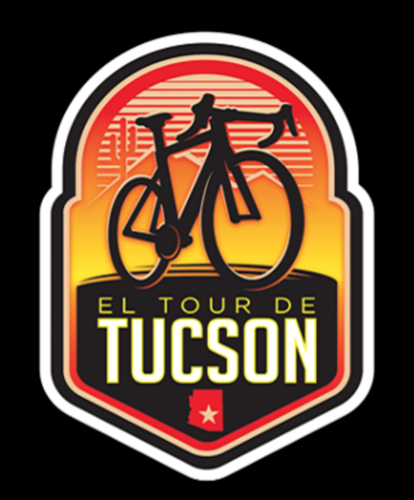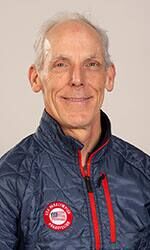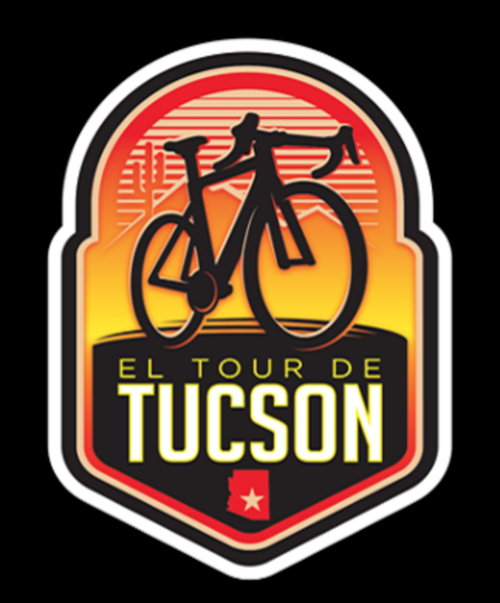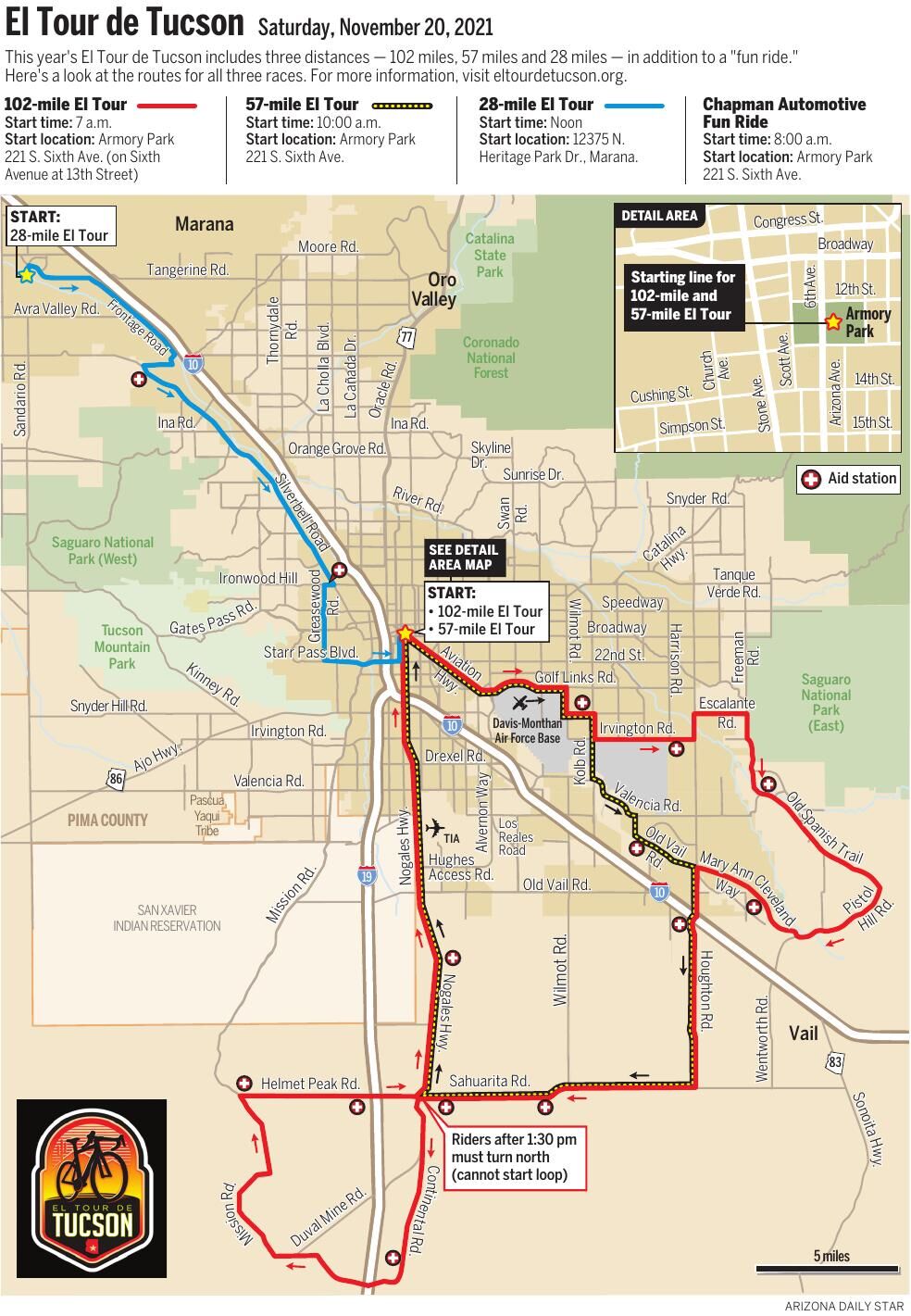There is a certain silence that sets in once you are speeding fast enough on a bicycle, and it is a silence that pushes Todd Key further and further.
Once he gets onto that bike and gets going, he forgets for a moment that his right leg is missing and that his right hand is not all too functional. He forgets about the challenges of living life as an amputee and as a cancer survivor, and he just goes.
The rest of his life is spent navigating the difficulties of a world that has not been all too forgiving and not been all too kind.
But when he’s on that bike? He just … goes.

Todd Key
“When you’re on a bike, and you’re moving fast, and there’s no limitations on you, it’s a little bit like a superpower,” said the 60-year-old Key, who’ll ride in his fifth El Tour de Tucson on Saturday. “It’s like flying. It’s otherworldly.”
Learning to fly
All Key wanted was to feel normal again.
At the age of 7, he fell from a tree and suffered a compound fracture in his right hand that became infected. He eventually lost the use of his fingers, and eventually, his hand.
That was not enough to stop him from living the life of a rambunctious young boy, but a decade later, Key was diagnosed with sarcoma in his right knee, bad enough that he’d have to have his right leg amputated above the knee. Even now, he says he never processed the emotional implications of losing his leg.
For a while, he was lost, his heart as hurt as his leg and hand. A decade spent in a fog.
At the age of 28, after learning to move better with the help of an advanced prosthesis, he regained his footing and enrolled at Arizona State University.
Living a few miles off campus, he realized riding a bike to class would be better than driving. He bought a bike and a rack for the back of the bike to store his prosthetic leg, which, he says, elicited more than a few looks from the Tempe student body.
“This was 1990, and there was no Iraq war yet, and people did not appreciate amputees or want to acknowledge your existence,” he said. “There was a weird kind of fear.”
But Key would not be deterred, even if riding the bike for too long brought on excruciating pain.
It, too, brought back a competitive itch that Key hadn’t scratched in some time.
“I spent a lot of time racing two-legged people who didn’t know they were racing,” he said. “Part of my nature.”
Soon enough, those 10-minute rides awakened something within Key. He wanted more.
Only one problem: At that time, adaptive athletics were not much of a thing. Or, at least, there were not readily available equipment options for those with limited mobility.
Key embarked on a quest to modify his bike to allow for greater comfort across longer distances.
Aerobar pads had just been introduced to European cyclists, taking the pressure off cyclists’ hands and distributing the upper body weight through the elbows. That was a huge improvement for Key, who had little strength in his right hand to support his body. In conjunction with mountain bike bar extensions, Key developed a way to relieve the pressure from his right arm, and he was able to increase from 15-minute rides to 45-minute rides.
At that point, he’d have too much pain on his residual limb to sit comfortably, and the pain would set in, and the ride would end. No matter the tinkering, there just wasn’t a comfortable seat. Key’s passion for cycling was curtailed.
“That put an end to my cycling career,” he said. “There was no internet, no way to look up amputee cycling. No Paralympics. No research. I wasn’t even looking at it the right way.”
In the mid-2000s, Key had a new job and he had gotten a little thick around the midsection. To lose weight, he bought a bike once more, and, “Within two days of buying it, I quickly remembered the pain.”
“I hadn’t really thought it through again,” he said. “You feel like a two-legged, two-armed person when you’re buying the bike. But the moment you try to ride it, you remember quickly that you’re not.”
But by then, he says, “the world had started to see people with disabilities differently.” He credits the change in perspective to the Iraq War, which left untold soldiers missing limbs. All of a sudden, it wasn’t so strange to see someone pedaling by with a prosthetic leg hanging off a rack.
Key went to tinkering again, and with the help of prosthesis specialists, he developed a bicycle to his liking and comfort. He found some people with whom to ride longer distances, and one day, one of them spotted Paralympic medalist Allison Jones on her carbon-fiber custom bike.
“We analyzed what she had done, and it dawned on me that I could figure out a way to attach the top of my prosthetic to the seat post, and I went from the seat pad to the socket in six months,” Key said.
All of a sudden, he could fly.

Todd Key says cycling gives him something close to a superpower. “It’s like flying,” he says. “It’s otherworldly.”
Diversion becomes a passion
What had started as a diversion quickly became a passion, and Key found himself out on the road for an hour, two hours, then three. He had found some peace. And some quiet.
And, most importantly, a community.
“I went to my first race in Italy, and I’m sitting at the start line, and I’m looking around at all the riders, many with one leg, and I notice that every single person has a completely different set-up that’s virtually identical,” he said. “It turns out there were a couple hundred guys around the world who tried to figure it out the same way.
“That socket and the combination of figuring out my handlebars changed my life.”
In 2009, riding along with his brother who is also a cyclist, Key completed the 190-mile Pan-Mass Challenge in Massachusetts. The next year, he joined as many local charity rides he could find in Scottsdale, and he was soon invited to join the U.S. Paralympic Cycling training center in Colorado Springs.
Cycling has since taken Key all over the world, from Italy to Spain to the Netherlands and more.
It also takes him into classrooms throughout the Tempe and Northern Arizona area.
“Talking to kids, certain age groups, they’re just mesmerized,” he said. “I get the chance to talk about cancer and bullying and creating your own adaptations. Other than cycling, it’s the most incredible thing that I do.”








